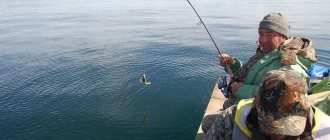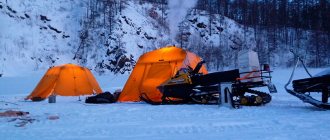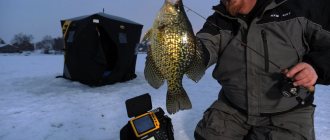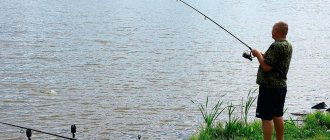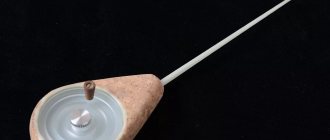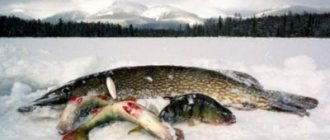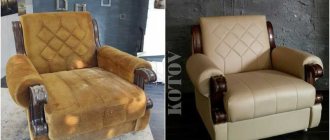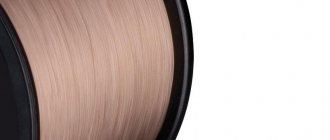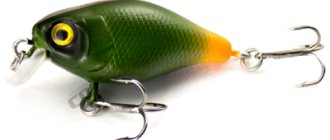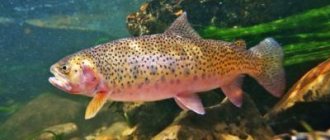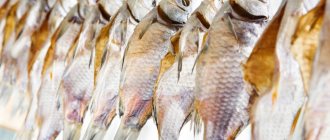Trolling
- a method of fishing from a moving motorized watercraft (boat, cutter).
A similar type of fishing from a rowing craft is called “track”. Trolling
is used to catch marine (tuna, marlin) and freshwater (pike, pike perch, catfish) predatory fish. Artificial baits are most often used as bait, less often natural ones (fish on a special tackle). Until recently, trolling was considered an illegal form of fishing in a number of regions of the Volga-Caspian basin. In some regions, it was limited to two baits on one watercraft (rivers of the Azov-Black Sea fishery basin. According to the new federal rules for amateur and sport fishing of the Russian Federation, trolling is a completely legal type of fishing. Although, the old restrictions remained - two baits per one watercraft.
Content
- 1 Trolling Basics
- 2 Trolling equipment 2.1 Electronic equipment
- 3.1 Spinning
- 4.1 Spinners
Basic Concepts
For those new to fishing, the concept of trolling is a mysterious one. What is it? Trolling is fishing with a spinning rod, which is placed on a boat or boat with a motor. In essence, they simply pull the bait after a floating boat or boat, and it is important to correctly select everything necessary for this process.
This type of fishing is practiced in frozen ponds with stagnant water, on rivers, and there is also a marine variety. The main goal is to catch a large trophy from the water, for this purpose large-sized bait is used as bait:
- wobblers;
- oscillating spoons;
- silicone;
- live bait
There is no need for wiring the bait here; it is simply pulled behind the boat.
Autumn fishing is especially popular; during this period, fish try to fill up on fat for the winter and throw themselves at baits of various colors and shapes. Sea trolling is especially popular at this time of year; the summer heat is gone, the coolness of the sea air allows you to fish for a long time in the chosen place.
Trolling Basics
Trolling
There are several fundamental principles of trolling, regardless of which boat it is carried out from: a rowboat, a motorboat, or even an electric motor. The first is to use a rod holder. First, the rod holder should be firmly fixed in the boat, preferably permanently. It must securely hold the rod and at the same time provide the angler with quick access to it at the time of the bite. Simple holders can be made from metal or plastic pipes secured to the boat.
It is optimal to steer the boat in a slightly zigzag or curved course. Using two or three rods, this course recreates the natural situation where the bait on one side of the boat swims faster than the bait on the other side of the boat. Turns should be made slowly to prevent the lines from becoming tangled. In this situation, you can use from two to four rods.
The line should be released through a weak cast, or simply release the spool, and then the forward movement of the boat will unwind the line from the reel. When trolling, it is better to use short lines, but they must be of sufficient length to adequately cover the fishing area. Long fishing lines make it difficult to control the action of the bait. The vibration of the rod tip when retrieving means the bait is moving properly. In addition, it is better to hook with a short line.
Secondly, trolling with artificial bait from the bottom is that the line released should be 50% longer than the depth at which you are fishing. This length can only be increased if the water is crystal clear and the fish are shy.
It's also worth spending some time experimenting with different lures until you find the right one. After that, instead of all the others, use the “favorite” of the day. In some cases, a wide range of baits across the fishing depth makes trolling most effective. At other times, placing baits close to each other attracts fish to a greater extent, as it resembles a school of fry.
In windy weather, it is important to keep the fishing line close to the water so that the wind does not reel in the excess length. If the line is not tight, it is impossible to track the bite. To fully control the situation when the pike is already on the hook, you should reel in the remaining fishing lines before landing the caught fish.
Trolling: tips and tricks from professionals
So, the first thing to consider is that the bait should be located at a great distance from the boat. The recommended distance is 100-120 meters; if it is shorter, at high speed of the boat there is a risk that the effectiveness of the bait will be impaired.
The speed at which the wiring will be carried out is determined individually; the type of bait used, as well as the parameters of wobblers and spinners, should be taken into account. Note that in the game of bait there should be no unnecessary movements that are unnatural for the behavior of the fish.
After casting the bait to the required distance, the rod must be installed in a metal cup, which must be present on the vessel. It is important to know that sea troll fishing is a fairly serious type of fishing. It is not recommended to hold the tackle in your hands, since at the moment of a bite a strong blow may occur, which the angler may not be able to cope with and as a result, the expensive tackle will end up overboard.
Immediately after the bite, the boat stops, a sharp and strong hook is performed, after feeling the resistance of the fish, you can start fishing. There is no need to force events, because if the trophy turns out to be large, he will be able to break the line after the next jerk. After the fish is brought to the side of the boat, it is carefully tucked under the gills and taken out of the water.
Trolling Equipment
If you are fishing by trolling, you will need the following equipment:
- Boat. It is recommended to use a small one (up to 4 m in length). It can be made of rubber, wood or metal. In principle, the material of the boat does not play a special role, the main thing is that it has a motor. Considering the length of the fishing trip, it would be nice to have comfortable seats as well.
- The outboard motor can be gasoline or electric with a power of up to 15 hp. With.
- Spinning rod for trolling.
- Echo sounder. An optional, but very practical tool that determines not only the depth, but also the bottom topography.
Electronic equipment
How an echo sounder works The easiest way to measure depth is to lower a rope with a sinker at the end into the water.
A small plastic mark is attached to each meter of this rope, and when the sinker reaches the bottom, all that remains is to count the number of these marks. However, this lengthy process takes a lot of time if used frequently. Electronic depth measuring equipment has made sport fishing and especially trolling a fun and effective activity. There are several different types of echo sounders: backlit, LCD, graphic and color. An illuminated echo sounder is the cheapest and gives a very clear picture of the depths and structure of the bottom - rocky, sandy or muddy. Their more complex variations also show concentrations of fish, individual individuals, and give sound signals when a fish is detected or a sandbank is approaching. All this information is displayed on the screen in the form of light signals.
A graphic recorder records all the information on a roll of paper. This type of echo sounder provides information about depth, bottom structure, shallows, sunken tree trunks, small fish, predators, thermoclines and currents. Video echo sounders use more advanced technology. They provide the same information, but in color. Other equipment that can be installed to assist the angler include a sensor to measure water temperature and a device to indicate trolling speed.
Trolling equipment
When assembling equipment for trolling fishing, the bait is mounted at the end of the main fishing line or on a leash. Installation may include a sinker required to penetrate to the desired level.
Special devices are also used in trolling:
- downriggers, which serve to deepen the bait;
- outriggers, which are necessary to move the bait to the sides of the boat - this allows you to avoid tangling the rigs and fish a large area of water.
Trolling gear
Spinning
Now directly about fishing gear. Spinning rods for trolling, as a rule, have a length of up to 2.7 m. The use of a device with a longer length is not recommended, since this method of fishing does not involve casting into the distance. Therefore, it is recommended that rods not be very long, since their dimensions directly affect comfortable fishing.
As statistics show, rods with fast action or powerful casting are ideal for this fishing method. So, for example, a fast action device creates not only the optimal condition under which the slightest change in the movement of the bait is felt, but also allows you to make sharp hooks. A rod with a slow action, on the contrary, will not only not allow you to perform the actions described above, but can also lead to offensive mishaps.
But the main thing is to remember that power and rigidity cannot always lead to the desired result. In fishing, everything should be harmonious. Accordingly, when planning to engage in trolling, you need to take into account not only the weight of the gear, but also the weight of possible prey. So, for example, if the maximum fishing depth is not very large, then light tackle will be enough. If you plan to fish on a deep-sea river, then you will be nowhere without powerful gear.
Coil
Good trolling is ensured by a powerful reel, since only it can withstand the various loads created by fairly large fish. Experts recommend the use of reels with a recoilless brake, capable of instantly braking at the right moment. It is especially worth noting that a not very expensive reel may not meet all the requirements, but purchasing one of the most expensive ones is also not worth it. The best option would be to buy an inertia-free one. Such a reel will serve its owner for at least 4 seasons with intensive use.
When purchasing, pay attention to the quality of the line roller. If it is mounted on a bearing, this is a plus, since the twisting of the line when reeling in is reduced.
Many anglers use reels with a rear brake and adjust the drag force of the drag while fishing.
Cord and fishing line
Trolling allows the use of both regular monofilament and braided lines. But most experienced fishermen still prefer braided lines. And first of all, their high strength plays a role here. Also, the advantages of braided cords include:
- Zero stretch, which not only makes it easy to control, but also allows you to feel any, even the slightest, change in the direction of the bait’s movement. The difference between braided cords and monofilament is especially noticeable when hooking. Cords, unlike monofilament, will never stretch, thereby creating an additional chance for the fish to unhook its jaws and fall off the hook.
- High strength and durability.
The only thing that can be considered a minus is their high price and low protection against damage caused by the sharp teeth of a pike.
Reels
Traction characteristics must be at the highest level for reels used for trolling, especially in sea conditions. For this type of fishing they use:
- reels with a baitrunner, the spool of which must hold a sufficient amount of fishing line. The ideal option for Black Sea trolling are products with 6000 and 7000 spool sizes. The number of bearings should not be exorbitant, 4-5 is enough for a smooth ride, and an instant stop and the presence of a bearing in the line layer are mandatory.
- Most trollers prefer multiplier products; these reels have excellent traction qualities. With the help of such a reel you can catch huge trophy specimens of marine fauna.
When choosing a reel of any type, pay attention to the material from which the spool is made. For sea fishing, trolling in particular, only metal ones are suitable.
Lures
Lures for trolling For trolling, you can use almost the entire range of artificial spinning baits offered by fishing companies. In most cases, wobblers are used, as well as rotating and oscillating spoons. Many anglers successfully use live bait or rigs with dead fish.
Spinners
Turntables from the famous French company Mepps work very effectively. What is a “working” spinner? A working spinner is a spinner that meets the requirements listed below.
- The first is good contact with water. This means that as soon as the spoon falls into the water and you start retrieving, the spoon begins to rotate. During the retrieve, various obstacles are often encountered on the path of the spinner, such as algae, snags, etc., when the spinner encounters any obstacle, its action is disrupted, the petal sticks and stops rotating. After passing the obstacle, the petal of good spinners instantly resumes rotation. The shorter the interval of the “stuck petal”, the better the contact with water for this spinner.
- Secondly, high-quality wire, which should not rust and be durable.
- Third, the tees must be sharp and durable. Remember, a good hook, when loaded beyond its capabilities, should bend and not break. Overheated hooks break. The sharpness of the sting is usually checked on the nail. If you run the sting along the surface of the nail, the sharply sharpened sting digs into the nail and does not slip. In this case, no pressure is applied to the hook.
During fishing, it is necessary to constantly check the sharpness of the sharpening and, if necessary, correct it using a diamond file. After all, shell rock and stones are often found on the path of the spinner.
Oscillating spoons
There is a separate class of “oscillators” - trolling. They are made by Americans and Scandinavians mainly for catching lake salmon. These are spinners of various sizes - from a couple of centimeters to “insoles” more than 20 cm long - but always relatively light. The weight on them, as a rule, is not indicated at all, only the length and width. They are used in conjunction with various types of deepening agents - from ordinary “olive” sinkers to downriggers. If you simply put such a spinner on a fishing line, then even at the lowest speed it will instantly bring it to the surface. What's the point? Why is this spinner good? And the fact that it works at the lowest speeds.
If you want to catch a trophy, but passive pike, you should think about “insoles”. Because it’s not easy to find a wobbler at a depth of ten meters with a deepening agent. If you put on a floating minnow, it tries to float up from this depth; if you put on a sinking one, it goes deeper. You can, of course, choose one, but very few of the wobblers will work at a speed of 2-3 km/h. But the trolling “oscillator” will work, and how.
Wobblers
Wobblers are precisely the artificial bait that is preferred when trolling. Well-made and balanced wobblers have enormous attractive power for predators. A wobbler of a certain shape and size has its own unique game. Some models of wobblers quickly scour from side to side, others sway slowly and gently, others sink perfectly, etc. Wobblers that are used for trolling are divided into the following types:
- Floating
. These are wobblers designed for fishing in the upper layers of water or in shallow water. As a rule, they all have high buoyancy and a small blade (lip), which does not allow them to go deeper than 0.5 - 1 meter. There are usually one- and two-part ones. - Diving.
These are also floating wobblers, which have a longer lip, which allows them to go deep when retrieved. Some models can easily dive up to 6-7 meters without additional loading. Naturally, these wobblers are used in deeper places. They successfully fish dumps and edges, as well as middle layers of water in deep holes. - Sinking
. The name speaks for itself. Used for fishing bottom layers of water. They require good knowledge of the bottom of the reservoir, because fishing with sinking wobblers in snags can result in expensive pleasure. Typically, fishing with sinking wobblers is mastered after complete mastery of fishing with floating and diving wobblers. - Suspenders
. These are wobblers with zero buoyancy. If you throw such a wobbler on the water, it will begin to sink very slowly. Suspenders are used for fishing at a given depth. They cast, wait for the wobbler to drop to the required depth and then begin retrieving.
When buying wobblers, pay attention to what type they belong to. All serious manufacturers indicate on the packaging (and some on the wobbler itself) its type and weight, sometimes the depth to which a given wobbler can dive without additional loading. The color of the wobbler is a matter of taste for each angler. Some people prefer bright, unreal colors, others neutral, natural tones.
Trolling. Basic fixtures and accessories
T rolling. If you have purchased a boat and a motor, then the first thing you will obviously want to do is try trolling. This method of fishing is interesting, exciting, known since ancient times, and very effective, if, of course, you prepare for it and purchase or make the necessary devices and accessories. Without them, of course, it is also possible to fish, because our grandfathers made do with all sorts of newfangled devices when fishing with a “track”, but with them, fishing is more comfortable, and, most often, more effective.
In this article, we will consider only the main ones, the most used and in demand when trolling in freshwater bodies . We will not consider sea trolling and huge boats, this is a separate big topic. Let's consider trolling from the more common PVC boats with a small motor and the view of an amateur fisherman who recently bought this boat with a motor. We will dwell on some devices in more detail, on others less. And there is only one reason for this; every device, accessory, equipment, bait for trolling can be discussed and analyzed in more than one article. Trolling is a very versatile way of fishing!
1. GEAR
This is exactly the topic where not only is there not enough section, but several books cannot accommodate the variety of gear and baits used for trolling. But if all the information is rather roughly generalized, then we can highlight several main points when choosing and assembling gear.
- Rod . For trolling from a small boat, powerful rods may not be necessary, but light rods are not suitable either. There will definitely be snags, and it’s good if the clutch works successfully, otherwise breakdowns will inevitably occur. And choose a fast-action rod, since it is by the tip of the rod that you will track the bite, even if the spinning rod is in your hands and not in the holder. A bite and then a sharp hook - you can’t do without a rigid rod. The length of the rod is small, 2.1 - 2.4 m is enough .
- reel ; this is the type of reel that will allow you to withstand the increased loads that trolling implies. Don’t try to install an expensive reel right away; for the first time, a regular inertia-free spinning reel will do. At least it will fulfill its main task of choosing a fishing line until you decide that trolling is your way of fishing and it’s time to take a thorough approach to purchasing gear.
- Line or braid? Of course, braided line, which has many significant advantages over conventional monofilament fishing line. This includes minimal, almost zero elongation, durability, and high strength. The braided cord not only allows you to feel the bite, it allows you, and this is the main thing, to control the movement of the bait. A diameter of 0.17 - 0.2 mm is the most popular and in demand when trolling.
- Lures. When trolling, almost all artificial baits in the fishermen's arsenal are used. These include a variety of spinners, various rubber and silicone baits, and, of course, wobblers . Wobblers are considered the main baits when trolling. With the right choice of wobbler for trolling, this bait will have no equal opponent. The most suitable for trolling, without the use of any devices or loads, are floating wobblers. The most universal wobblers go deep to 3 - 5 m , which is enough for most reservoirs.
2. BOAT ROD HOLDER
One of the most necessary elements in trolling fishing. Rod holders on swimming craft are used both stationary and removable. Each method of attaching holders has both pros and cons, they are quite obvious, either mobility or solidity. The right choice greatly contributes to convenience, comfort and success when trolling. Thus, a spinning rod holder is a must-have accessory when trolling. And of course, every fisherman selects holders for his gear, for his boat, for his fishing technique, for a specific body of water. For some, it is enough to hold one rod in their hands, while others use various additional equipment and a large number of rods. When using several rods, you cannot do without rigidly fixed holders.
many modifications of holders - with attachment to the side, transom, bench or other parts of the boat, with or without the ability to adjust the angle of inclination, metal, plastic, tubular, with fastening of the spinning rod at two points, etc. If you are just starting to master this type of fishing, and have not yet decided which accessories will be most in demand, and you have a PVC boat that has a liktros (it holds the seats, i.e. cans), then purchase a regular removable rod holder on a liktros, which can move along its entire length. This holder is simple, inexpensive and quite convenient when trolling with 1 - 2 rods . For example, you hold one rod in your hands, and the second is installed in this holder. It fulfills its functions, namely, after a bite, the rod should not fall overboard, and the time to pull the rod out should be minimal.
Thus , if you have a boat with a motor, a couple of spinning rods with inertia-free reels, and several wobblers, then you can go trolling fishing. But if you are interested in other devices used for trolling fishing, let’s consider a few more, from a huge number of them . Most often, these devices are used to deepen the bait, it’s not for nothing that there is a saying that fish look for where it’s deeper...
3. SINKER ( Sinker )
If trolling is done at shallow depths - up to 5 meters, then it is enough to choose a suitable wobbler or use a small load. But if it’s deeper, up to 6 - 10 meters, and your wobblers no longer go down to this depth, then there is the next category of deepeners, which are called sinkers. Sinker is a weight in the form of a plate , which allows you to deepen not only a shallow-water wobbler, but also a spinner (“spinner”, “shaker”) to the required depth. Attached between the rod and bait. There are various modifications of sinkers (Diving Sinker, Slide Diver, Bank Sinker, Inline Sinker) - different weights, different fastenings, adjustments, shapes and colors. The packaging usually indicates the required thickness of the fishing line, the weight of the bait, the distance from the boat, speed and other, it should be noted, very conditional characteristics.
The most interesting is the Diving Sinker - a diving sinker or, as they are also called, an adjustable diving weight. It is a lead weight that has a blade like a wobbler, which performs the same functions - it deepens the sinker when the wiring speed increases. On one side there is a triangular bracket on which the ring moves, to which the main line is attached. At the other end is a ring to which a leash with bait is attached. Interesting are sinkers with an adjustment plate, which allows you not only to deepen, but also to deflect the bait. This is important when fishing with several spinning rods in one boat and allows you to do without another device for trolling - a “boat” (more on that later).
4. Bouncer _ _
with a bouncer is more reminiscent of a tackle with a lead or even a Tyrolean stick. The weight used is a bouncer - a streamlined weight in the form of a tube with weights on both sides. There are also wire bouncers. Both models are quite convenient in their use, but the bouncer on the handset is more versatile .
The distance from the leash attachment point to the bouncer is 40 - 50 cm, the leash should be the same length. Both the bouncer, the wobbler, and the speed of the boat must be selected in such a way that the wobbler does not fall below the level of the fishing line to which it is attached. It is clear that this is necessary so that the wobbler does not touch the bottom of the reservoir to minimize snags. The bouncer also serves the same purpose. For example, in a strong current, the bouncer can go above the wobbler’s submersion level, this should not happen. In such cases, we either replace the bouncer with a heavier one, or install a lighter shallow-water wobbler, or install a “braid” instead of a leash, or reduce the speed of the boat. For example, at a depth of up to 3 m we set a bouncer at 30 g, at 5 m - at 50 g, but this is with a moderate current. During the wiring process, the bouncer goes along the bottom, bending around the relief, the wobbler goes with some excess above the bottom. Most often, bouncers are used at shallow depths.
5. DIVER _
A diving device is another interesting device for trolling fishing, which, due to its design, allows you to deepen the bait. Divers use different baits, but most often these are various spinners and shallow-water wobblers. There are several varieties and modifications of divers. Most popular:
- Dipsy Diver - translated as “drunk diver. ” Frankly speaking, it’s not a very ordinary name. And he received it for his behavior during the wiring. On the underside of the diver there is a loaded keel, by turning it we upset its balance and it tilts away from the boat. Using a graduated scale, we can adjust not only the magnitude of the deviation, but also in which direction it will deviate - to the right or left of the boat’s wake. Those. This diver works both as a depth diver and as a miniglider. When setting up a diver, it is necessary to adjust not only the amount and side of the deflection, but also the latch. So that it unfastens when hooking. With such a diver you can deepen the bait to 13-15 meters. But do not forget that the deeper the bait goes with the diver, the greater the load on the gear, and it is quite possible that you will have to use a more powerful rod, reel and thicker “braid”.
- Jet Diver . _ This diver is interesting because when the boat moves it goes deep, and when it stops it comes up, this is somewhat similar to a floating wobbler. And this is its advantage - by stopping and resuming the movement of the boat, we either raise the bait or deepen it. The bait moves in steps, as in a jig, allowing you to fish different water horizons. A jet diver creates less water resistance than a deep diver, but cannot deviate to the side.
6. MINIPLANER (“Boat”)
A fairly common device for moving bait away from the boat under the influence of water resistance and its asymmetrical shape. A weight is mounted at the bottom, which holds the miniglider in a vertical position. It is used when installing several spinning rods on a boat to distribute baits both across the width and depth of the reservoir and to guide the bait in different horizons. It is attached with a clip to the main fishing line, releasing it when biting. The ideal bait for a miniglider is a small wobbler that does not create much resistance in the water and has a small depth. Silicone baits with a small weight and oscillating spoons work well with a miniglider. But it is not recommended to install “turntables”. When fishing, we take into account that the greater the water resistance, the worse the miniglider works - it is blown into the wake created by the boat, and it becomes useless.
7. FLASHER ( Flasher ), DODGER ( Dodger )
Flesher is a “flashing beacon” and dodger is a “waggling decoy.” These are special plates that serve to acoustically and visually attract fish. Flashers, unlike Dodgers, rotate and have a curved configuration. And it is called a “beacon” because it has a corrugated surface that imitates the scales of a fish. As a rule, a reflective coating is also applied to the surface of the flasher and dodger. They are attached to a fishing line or braid in front of the bait at a distance of up to 3 m, and they greatly change its movement in the water. If a deepener is installed, then they are attached between it and the bait .
These devices give the wobbler, in addition to its own play, an additional range of movements in different directions. The Dodger gives the bait oscillating movements to the right and left, and the Flasher gives additional movements in a circle. Movements give the bait a resemblance to a natural fish, visibility and additionally attract a predator from a long distance. The wider the dodger or flasher, and the larger the wings, the more actively the bait works with them. As a rule, they are installed when trolling on large bodies of water.
CONCLUSION
The article discusses only a small part of all existing devices and accessories for trolling. This topic is very diverse, and the trolling fishing method is interesting and exciting. And if you also use a combined method, i.e. First, a fish site is searched for using trolling, and then the spinning fishing of this place begins, then, believe me, you will like it.
Happy fishing!
Trolling fishing technique
Trolling fishing technique It's no secret that predatory fish very often stay in places where there is a pronounced difference in depth.
The fishing spots on the edges are quite difficult, so the best motor for trolling there would be an electric one. Silence, efficiency and good maneuverability will ensure high-quality fishing even on not very deep edges. As bait on the edge, it is better to use floating wobblers in tandem with a bouncer, which will eliminate unnecessary hooks and correctly set the depth of the tackle. An echo sounder will tell you the required fishing depth, and it is better to place the tackle from the bottom at a distance of 50 cm to 1 m. Trolling along vegetation requires good skills and knowledge of the bottom, but often produces record catches. In places where there is a lot of grass, hunting predators often live. It is better to place the bait on the surface or at shallow depths, so the silent boat engine plays an important role here. A shallow-water Magnum wobbler or its analogs is suitable for bait; you can also use medium-depth wobblers, but in this case you need to know well how far the vegetation rises from the bottom. Wiring the gear should not be carried out along the very edge of the vegetation. A hunting predator quite successfully attacks it even at a distance of 1 to 2 m from the edge of the grass. Wiring the tackle at such a distance from the vegetation will eliminate unnecessary snags.
When fishing in the middle of the river, especially in hot weather, you should take into account that the fish do not always stay near the very bottom. Sometimes you can catch a fairly large predator in the middle of the water. For trolling in such conditions, you do not need a silent and maneuverable engine, since in fast currents it is better to give preference to the power of the unit. When fishing against the current, good results are shown by jig heads and deep-water wobblers, such as Fat Rap Deep Runner, Shad Rap, Rattlin Rapala and Rattlin Fat Rap. The prefix Rattlin means that these wobblers are noise-making, which acts as an additional stimulating factor for attacking the bait.
Having caught pike perch while trolling in an open area, you should stop in this place and switch to spinning fishing. Once at the flock's camp site, you can successfully catch several more specimens using the spinning method.
Ambient temperature has a huge influence on the depth at which fish feed. Pike feels comfortable at temperatures from 14 to 20 degrees, and pike perch prefers even lower water temperatures. Therefore, the fishing gear should be placed at a depth where the temperature is most favorable for the predator. During the hot summer months, it is worth paying attention to places where natural underground springs exist. A microclimate is created near them and predators often hunt.
Depending on the depth at which you plan to fish, you should select a watercraft. For trolling on the surface and at shallow depths, the vehicles must be silent, and for strong currents - powerful. Therefore, it is difficult to say unequivocally which is the best motor for trolling.
SINKER
If trolling is done at shallow depths - up to 4 meters, then it is enough to choose a suitable wobbler or use a small load. But if it’s deeper, up to 6-10 meters, and your wobblers no longer go down to this depth, then there is the next category of deepeners, which are called sinkers. A sinker is a weight in the form of a plate, which allows you to deepen not only a shallow-water wobbler, but also a spinner (“spinner”, “shaker”) to the required depth. Attached between the rod and bait. There are various modifications of sinkers (Diving Sinker, Slide Diver, Bank Sinker, Inline Sinker) - different weights, different fastenings, adjustments, shapes and colors. The packaging usually indicates the required thickness of the fishing line, the weight of the bait, the distance from the boat, speed and other, it should be noted, very conditional characteristics.
The most interesting is the Diving Sinker - a diving sinker or, as they are also called, an adjustable diving weight. It is a lead weight that has a blade like a wobbler, which performs the same functions - it deepens the sinker when the wiring speed increases. On one side there is a triangular bracket on which the ring moves, to which the main line is attached. At the other end is a ring to which a leash with bait is attached. Interesting are sinkers with an adjustment plate, which allows you not only to deepen, but also to deflect the bait. This is important when fishing with several spinning rods in one boat and allows you to do without another device for trolling - a “boat” (more on that later).
General recommendations
- Experiment, think, analyze - you are smarter than a fish.
- Fish only with gear from well-known, time-tested companies. Do not use consumer goods purchased at markets on the advice of sellers who are trying to sell you all sorts of nonsense.
- Bad weather does not affect the bite. The only exception is a strong storm wind, when it is not possible to go out on the water. If you can’t bear it and still want to take a risk, then remember that you are putting not only the fate of fishing on the line, but also your life.
Sea trolling
To troll in the sea, you will need a watercraft - a boat, a yawl or a reliable motor boat. Sea fishing by trolling is a specific, but interesting fishing. It is interesting because it gives hope for catching large, trophy fish.
The specificity lies in the fact that relatively short periods of active fight against fish can be interspersed with fairly long periods of waiting for a bite. And yet, the chance to catch something unusual pushes all the disadvantages of this fishing method into the background.
Trolling at sea is fishing that is carried out on a grand scale. Sometimes you have to pay long hours and many miles for an interesting bite. Although, if you are not picky in choosing a trophy, you can catch non-trophy fish without much effort.
For sea trolling, special trolling gear is used. These are powerful spinning rods with a minimum casting of 60 g, equipped with powerful spinning or multiplier reels and durable cords or fishing lines.
Artificial and natural baits can be used for trolling. At the same time, natural ones are more catchy, and artificial ones are more convenient. Traditionally, trolling uses spinners, wobblers and rigs with dead fish. With these baits you can catch all the predatory sea fish.
Varieties
Trolling fishing has several directions and gradation by variety depending on the fishing location. There are such types of fishing as:
- sea trolling;
- river fishing method on moderate currents;
- trolling fishing on a small river.
In addition to the differences associated with reservoirs, trolling fishing is divided into thematic, for a specific type of predator, and general, in which the type of trophy is not initially placed at the forefront of the fishing result and is carried out at random. Thematic fishing mostly includes fishing in fresh water bodies, when one purposefully hunts for pike, pike perch or catfish, using specially selected baits for these purposes.
Sea fishing is more difficult to plan for a specific type of fish due to the wide variety of inhabitants of the water areas. Such fishing strategies are similar to a lottery, when absolutely any fish can become a trophy in the catch. In addition to the above types of methods, trolling is divided into basic and search. The main one is when a predator is caught only from a moving boat. Search - when areas of accumulation of fishing objects found by towing baits are subsequently fished with classic spinning types of hunting, anchoring a swimming device at a certain point.
